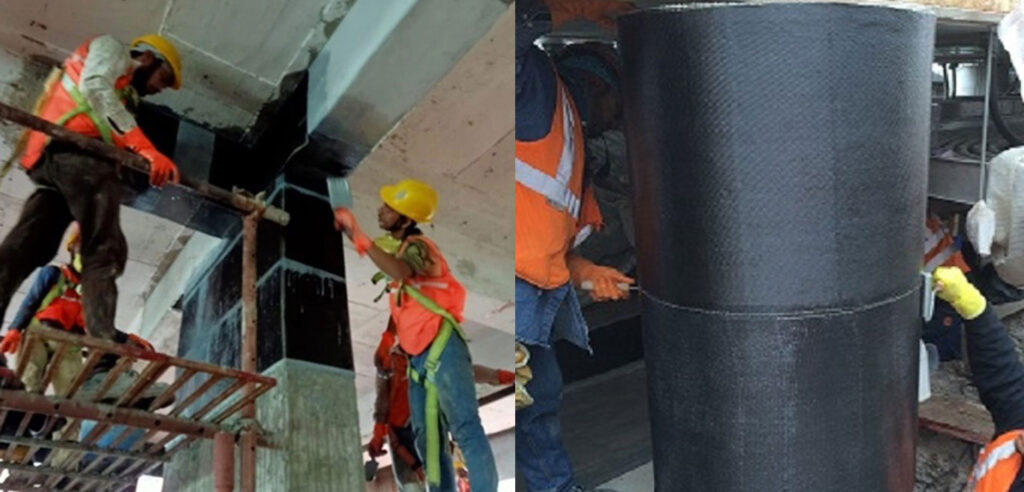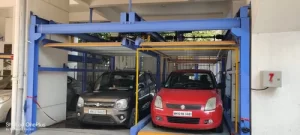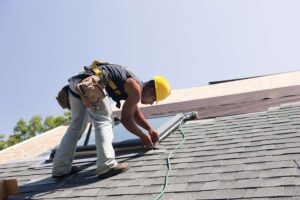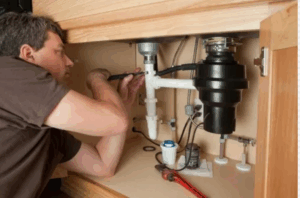In India, the construction industry is evolving at an impressive pace. As more cities expand and old buildings age, the need for modern structural repair methods is more crucial than ever. One such innovative solution gaining popularity is Carbon Wrapping for Beams. Whether you’re managing residential societies, commercial buildings, or ageing infrastructure, this technique offers a practical way to enhance durability without heavy reconstruction.
The Growing Concern Around Structural Damage
Building deterioration occurs with time. In any construction, beams that support a large amount of weight are frequently the first to exhibit symptoms of stress. Common problems include deflection, corrosion, and cracks. In India, structural deterioration happens even more quickly because of the country’s humid climate, seismic zones, and pollution. This is when sophisticated repair methods are useful. The emphasis is now on reinforcing rather than demolishing, and Carbon Wrapping for Beams offers a revolutionary solution.
What Is Carbon Wrapping for Beams?
Carbon fiber-reinforced polymer (CFRP) sheets are applied around weakened or damaged beams using this technique. The procedure greatly raises the tensile strength of the beam. Without significantly increasing weight, it also aids in restoring structural integrity. Heavy equipment is not needed, and the application is comparatively quick. Crucially, it permits buildings to remain in use while repairs are being made, which is very advantageous for Indian public and commercial properties.
Why Traditional Methods Fall Short
In traditional beam repair, concrete expansion or steel jacketing are frequently used. These techniques are time-consuming, labour-intensive, and space-constrained. Furthermore, they frequently struggle to adjust to intricate beam shapes. Traditional repairs are becoming obsolete in Indian cities where space is limited and building downtime is expensive. These problems are effectively addressed by carbon wrapping for beams in the present day. It works well even in challenging environmental circumstances, uses less material, and has a greater strength-to-weight ratio.
A Cost-Efficient Long-Term Investment
The long-term savings are significant, even though the initial cost may appear higher. The structure’s service life greatly extends and maintenance expenses considerably decrease. Rapid and efficient repair techniques are crucial in Indian metro areas, where business interruptions result in significant financial losses. When long-term durability and safety are taken into account, carbon wrapping for beams turns out to be a wise financial choice.
Easy Installation, Faster Turnaround
The ease and quickness of installation is one of the main advantages. It might be challenging to move tenants or halt activities while repairs are being made on many Indian structures. It is possible to wrap beams with carbon without having to leave the building. Because of this, hotels, hospitals, shopping centres, and housing societies favour it. In contrast to the weeks or months required for older technologies, the treatment can be finished in a matter of days.
Performance in Diverse Indian Conditions
India has a varied topography. Structures encounter a variety of difficulties, from humid coastal regions to seismically active northern regions. Fortunately, carbon wrapping for beams can be used in a variety of ways. The CFRP materials are moisture-proof, temperature-tolerant, and corrosion-resistant. This guarantees dependable performance even under the most adverse circumstances. This adaptability is crucial for Indian infrastructure. It lessens the requirement for various repair techniques in various places.
Enhancing Earthquake Resistance
Structures that can withstand earthquakes are crucial because many Indian towns are situated in seismic zones. Flexibility under earthquake stresses is not significantly increased by conventional beam repair. On the other hand, carbon wrapping for beams greatly increases a structure’s energy absorption and ductility. Buildings can therefore withstand seismic movements without experiencing significant structural breakdowns. This is not only advantageous, but also life-saving for public facilities like schools and hospitals.
Low Weight, High Strength Solution
Increasing a structure’s load with additional materials can occasionally have more negative effects than positive ones. The lightweight nature of carbon wrapping for beams is remarkable. It provides remarkable tensile and flexural strength despite its light weight. This makes it a very practical alternative for structures with load constraints, particularly older ones. It provides strength without increasing mass, which is crucial for retrofit projects in India.
Sustainability in Modern Repairs
Sustainable building techniques are more crucial than ever as India works to create greener infrastructure. Beams with carbon wrapping help realize this goal. It lowers carbon emissions, restricts construction waste, and uses less steel and concrete. This approach improves already-existing structures as opposed to demolishing and rebuilding. It’s a more intelligent and environmentally responsible method of protecting our cityscapes.
Long-Term Protection Against Corrosion
Steel corrosion is a common problem for reinforced concrete constructions. Particularly at risk are coastal regions like Kochi, Goa, and Chennai. A sealed barrier that keeps out moisture and salts is provided by carbon wrapping for beams. It prevents additional harm and protects the reinforcing steel. In humid or salty conditions, this extra protection is essential for prolonging structural life.
India’s infrastructure and construction industries are at a turning point. Reliable, non-invasive, and efficient repair techniques are becoming more and more in demand. These requirements are met with a contemporary twist by Carbon Wrapping for Beams. It guarantees longevity, enhances safety, and promotes sustainability. This method is expected to spearhead the nation’s next wave of structural innovation due to its increasing acceptance and shown outcomes






